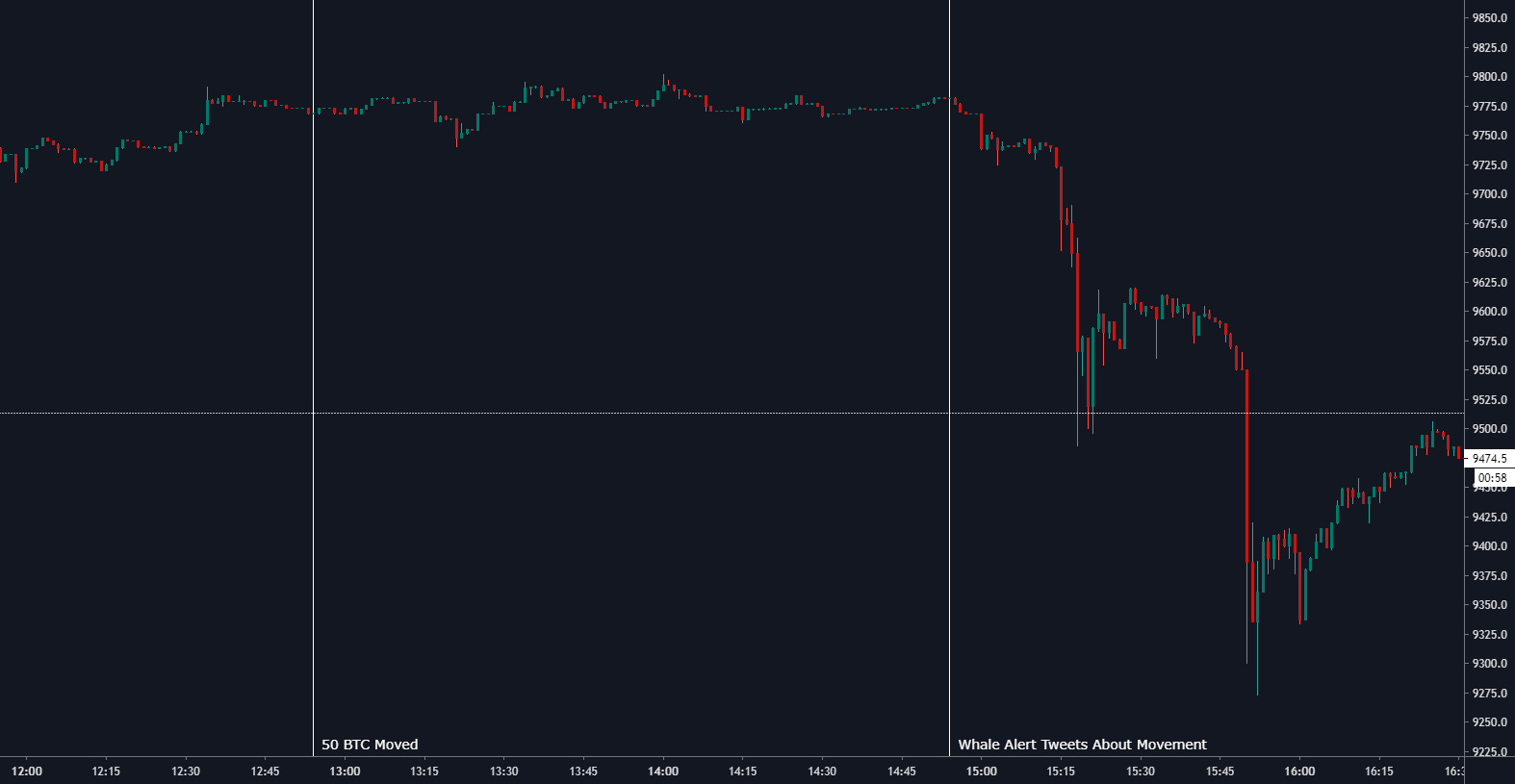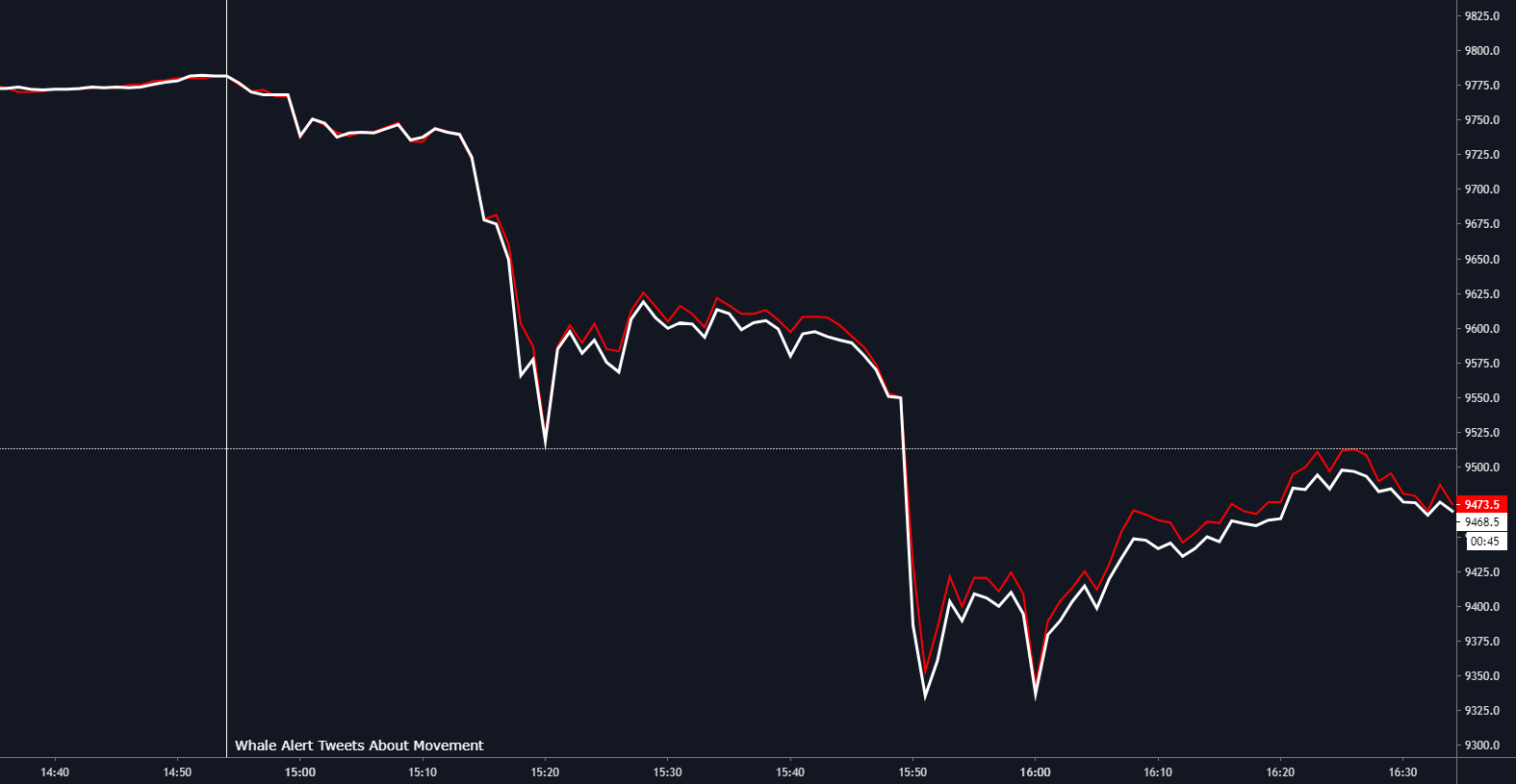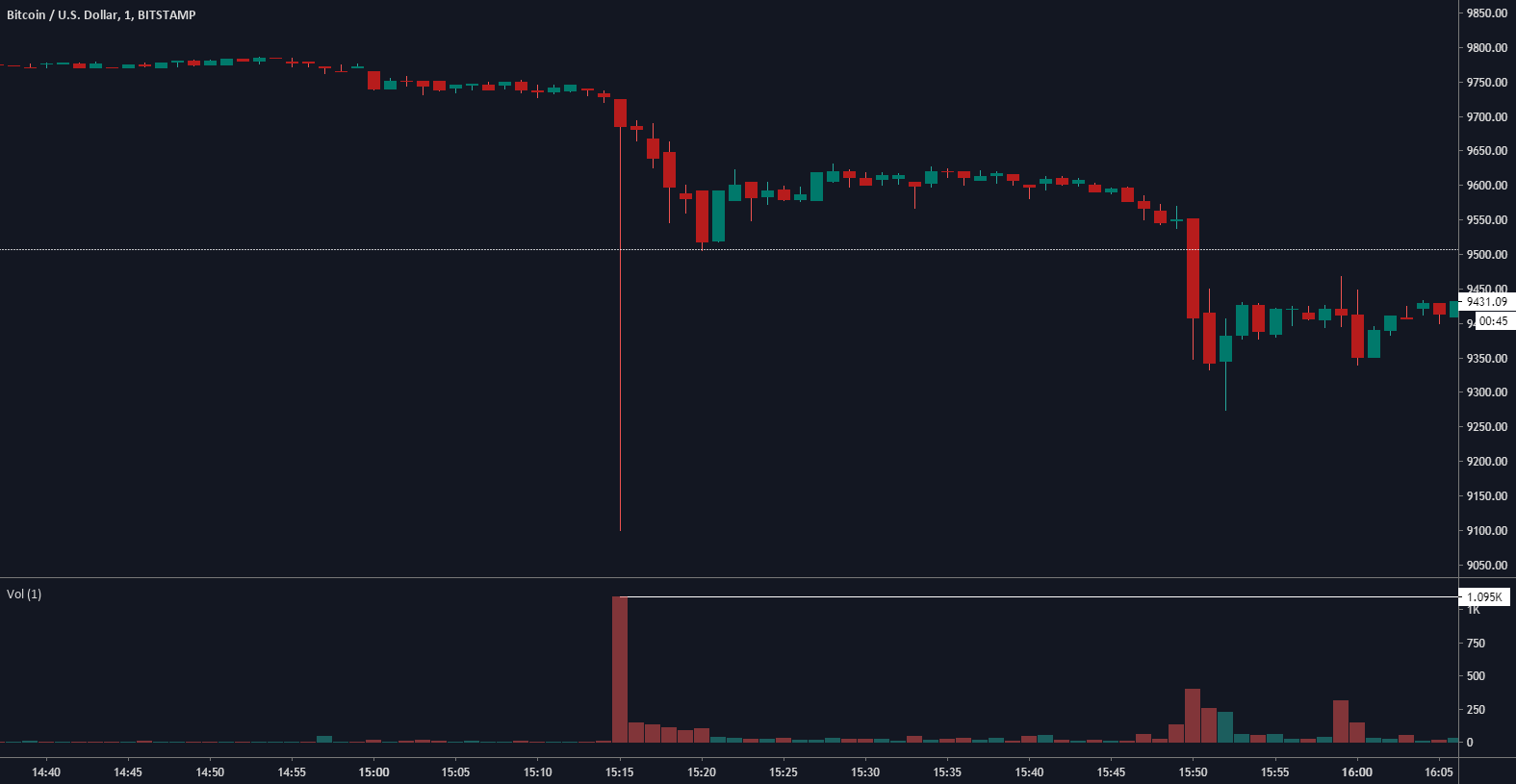Bitcoin movement spooks the market, resulting in a 5% drop
A recent movement of old bitcoin has spooked the cryptocurrency market, resulting in a ~5.2% drop over the course of an hour.
On Wednesday the 20th of May at 12:54 UTC, 50 BTC was moved from a wallet that has not had any activity since February 2009. The coins were awarded to the address for successfully mining Bitcoin block 3654, at a time when the block reward was 50 BTC. Having just undergone the latest halving, the block reward is now only 6.25 BTC. At the time of the transaction occurring, the value of the Bitcoin moved amounted to $488,000 USD.
The movement of this old Bitcoin is the first time since August 2017 that coins mined in early 2009 have been moved. Movement of coins from this era often spook the market, due to the perceived threat of an old Bitcoin whale cashing out their stash and crashing the market price of Bitcoin.
This particular transaction was flagged by Whale Alerts, a popular Twitter account that tracks large movements of cryptocurrency, as potentially originating from a wallet controlled by Satoshi Nakamoto, the anonymous Bitcoin creator. Though it is difficult to come up with an exact number, estimates put the number of Bitcoin in Satoshi’s old wallets at around 980,000 BTC, or roughly $9.3 billion USD at today’s prices.
Considering roughly 4.7% of all Bitcoin ever to be created has been mined by Satoshi, there is a strong likelihood that even a small percentage of these coins being sold would cause enormous downward pressure on the cryptocurrency market. With that being said, all evidence suggests that Satoshi has never actually spent any of his accumulated Bitcoin. Furthermore, no one has heard from the anonymous Bitcoin founder since the 12th of December 2010, with his last post on the bitcointalk.org forum being about implementing DoS (denial-of-service) protection for Bitcoin. The most recent movement of old Bitcoin also does not conform to the ‘Patoshi pattern’, a pattern of ‘nonces’ common in early Bitcoin blocks, which has typically been used to designate which blocks were mined by Satoshi.
Whilst the movement of these old coins were confirmed in a block at 12:54 UTC, Whale Alerts only tweeted about the movement at 14:54 UTC, a full two hours after the movement occurred. It could be inferred that this delay is to give an advantage to the creator(s) of the account and select individuals, allowing them to capitalize on the news before it became common knowledge. This argument is strengthened by the way the Bitcoin price reacted to each event.
As seen in the 1 minute Bitcoin chart for BitMEX above, the price did not react to the initial movement of the coins, but rather to the Tweet that was sent out by Whale Alerts. This indicates that traders who knew about the transfer before the tweet would have had a two-hour window to get into a position that capitalized off the news. Although asymmetrical information is a reality of trading in any market, data on the Bitcoin blockchain is free for anyone to view, and in theory anyone with address monitoring software could have detected the movement as it occurred.
Derivate exchanges often trade at a discount or premium during times of violent price movements, and this latest sell-off was no exception. As can be seen in the graph above, the BitMEX price (white) and the Coinbase price (red) were tracking each other closely prior to the decline in price. However, once the selling started, the BitMEX price, which is a derivative contract as opposed to Coinbase’s spot market, traded at a discount to the Coinbase price. This is usually attributed to the liquidation of highly leveraged positions, which adds additional pressure in the direction of the move, resulting in a premium or discount compared to spot market prices. At its’ lowest point, the BitMEX Bitcoin derivative contract was trading $20 USD lower than the spot price for Bitcoin on Coinbase.
On the popular spot market exchange Bitstamp, the price of Bitcoin dropped down to a low of $9100 USD during the crash. This happened during the course of a 1-minute candle however, and price quickly re-established equilibrium with the rest of the market. As can be seen in the lower section of the graph above, there was an unusually high amount of selling volume during this period, around 1,100 BTC. This amount would have been too large to be absorbed by the resting bids on the orderbook, hence the flash crash down to $9100 USD. Typically, orders of this size are executed in blocks so as to not crash the price as seen above.

Don’t miss out – Find out more today






